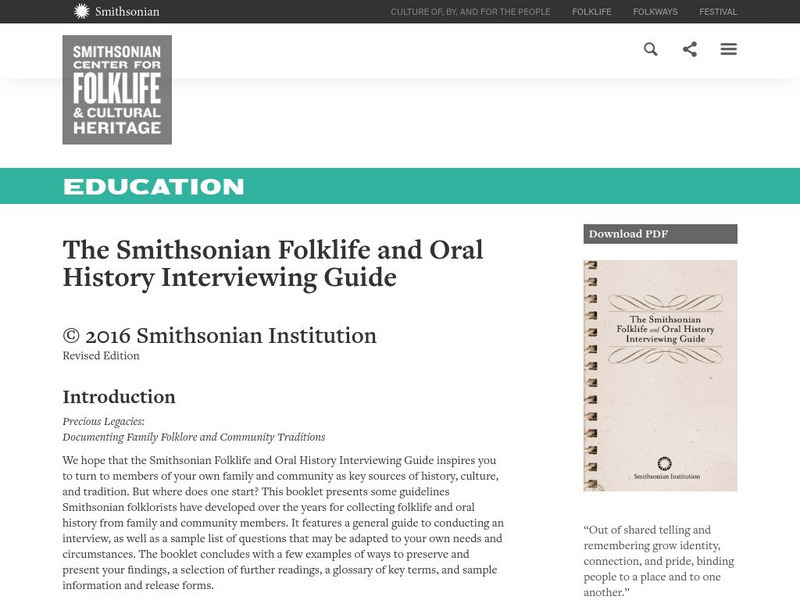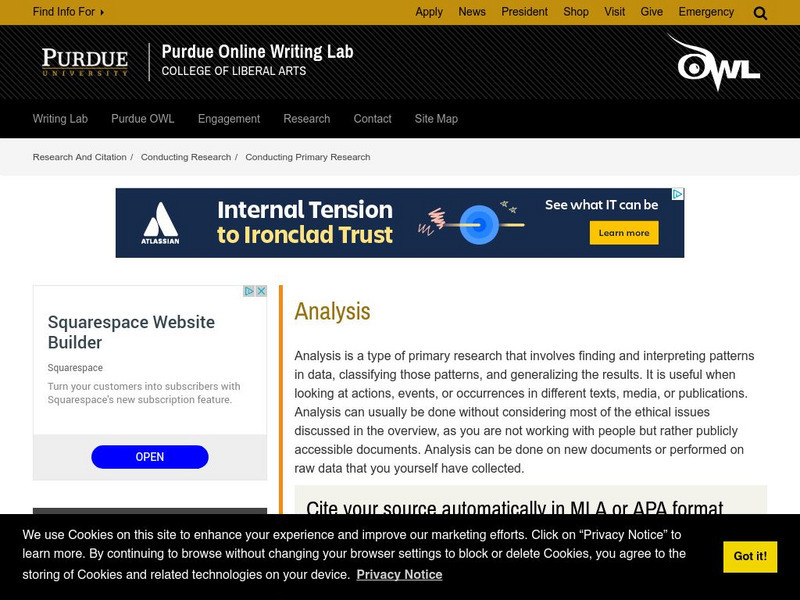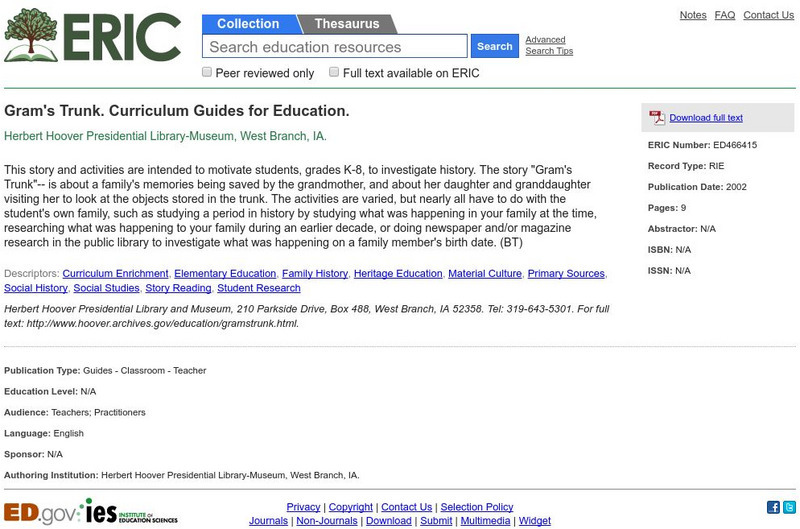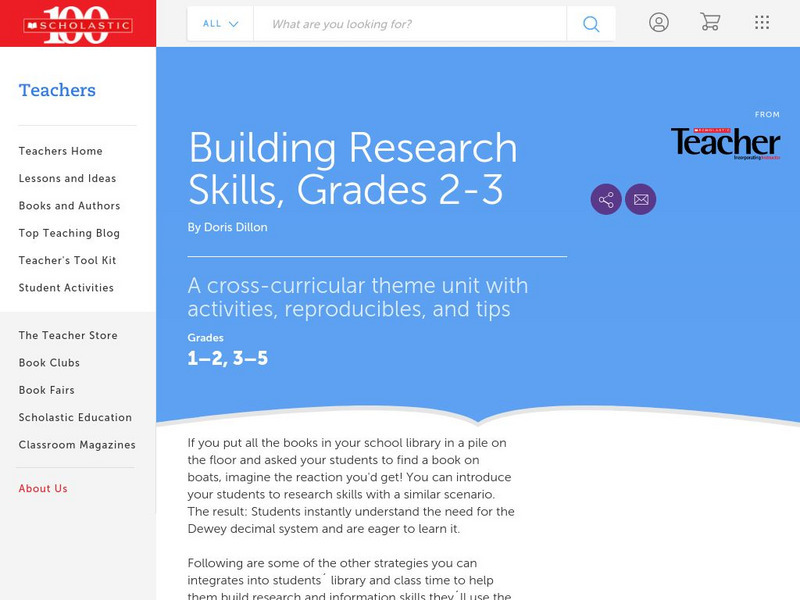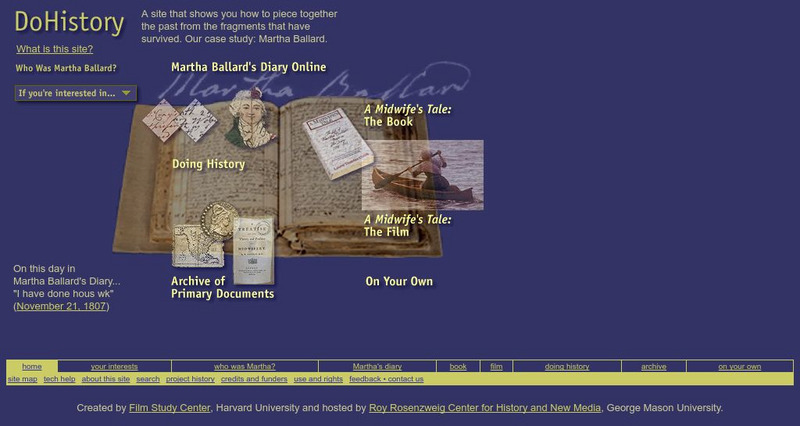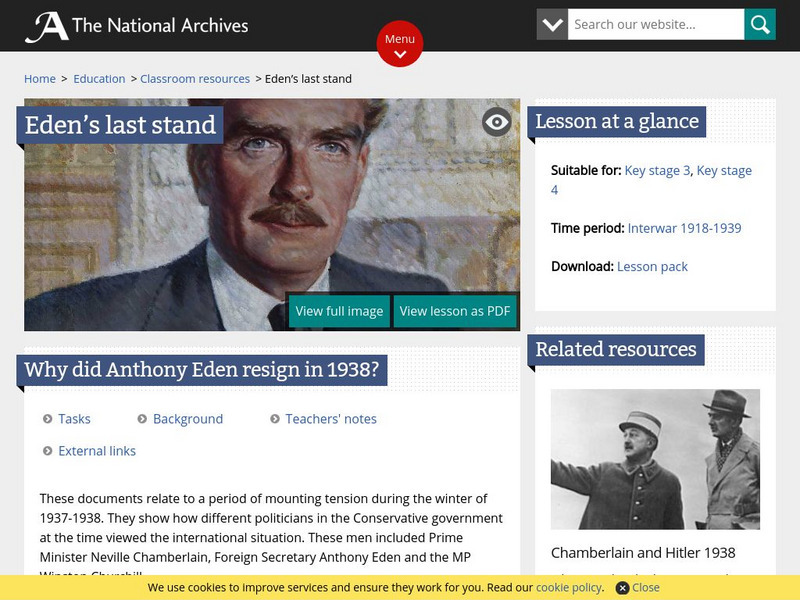Curated OER
General Greene to General Marion: Your State is Invaded, Your All is at Stake
Third graders examine the contributions of Francis Marion and Nathaneal Greene. In this Revolutionary War lesson, 3rd graders use primary and secondary sources to research Marion and Greene and the accomplishments of their men during the...
Curated OER
American Indian Reservation Controversies
Learners interpret historical evidence presented in primary and secondary resources. In this American history lesson, students research the reservation controversies of the 1870's. Learners use problem based learning...
Curated OER
Couch Potato or Inertia Victim?
Sixth graders how primary research is carried out. They design a simple survey questionnaire to interview people about their week average television watching time. They analyze the results and write a report based on the information.
Library of Congress
Loc: For Teachers: Analyzing Primary Source Documents
These student worksheets and activities help students analyze many different types of primary source documents. Life histories, objects, and photographs are all used to engage students.
Library of Congress
Loc: For Teachers: Classroom Materials Using Primary Sources
This excellent teacher resource features lessons that use primary source documents in an engaging way. Included are lesson plans created by teachers, themed resources, primary source sets, presentations and activities, and collections...
Internet History Sourcebooks Project
Fordham University: Medieval Sourcebook: History Through Primary Sources
This site from the Medieval Sourcebook answers the question: Why Study History Through Primary Sources? It provides complete information, a list of review questions, and bibliography information.
Other
Archives Pei: Heritage Fair Projects a Guide to Sources [Pdf]
A comprehensive resource for students and teachers for planning and researching a project for a heritage fair. While it is intended for Prince Edward Island residents, it offers excellent tips, web links and books for guidance.
US National Archives
Docsteach: A Revolution, a Reaction and a Reform: National History Day
Students will analyze primary source documents related to the National History Day (NHD) theme for 2011-12: Revolution, Reaction, Reform in History, determine how the documents are connected to the theme, and evaluate the effectiveness...
Smithsonian Institution
Smithsonian Folklife and Oral History Interviewing Guide
If you set out to do your own primary research with a tradition-bearer in your community, this guide will be very valuable. Get information about how to get the best results, along with an extensive list of possible questions for the...
TeachEngineering
Teach Engineering: Couch Potato or Inertia Victim?
Students design a simple behavioral survey, and learn basic protocol for primary research, survey design and report writing. Note: The literacy activities for the Mechanics unit are based on physical themes that have broad application to...
Annenberg Foundation
Annenberg Learner: Interactives: Historical and Cultural Contexts
This interesting interactive website explains kinds of primary sources and gives you the chance to identify them in some games.
Duke University
Duke University Libraries: Finding Primary Sources
Finding primary sources can be difficult and confusing at times. This site provides a list of history databases, rare books and manuscripts, and research guides for those looking for primary resources such as diaries, letters,...
Online Writing Lab at Purdue University
Purdue University Owl: Analysis
This entry focuses on using analysis to interpret primary resources; it provides methods and examples of analysis. W.9-10.10 Write Routinely
Online Writing Lab at Purdue University
Purdue University Owl: Analyzing Your Primary Data
This entry focuses on analyzing primary data including interviews, surveys, and observations. It also warns against over-generalization and explains the advantages of the triangulation of data.
Online Writing Lab at Purdue University
Purdue University Owl: Observing
This entry focuses on observation as a primary research tool. It covers topics including participation alters the outcome, observation and interpretation are separate, note-taking vs recording, and paying attention to details.
Smithsonian Institution
Smithsonian Libraries: Library & Archival Exhibitions on the Web
This index of links offers the opportunity to explore important and interesting topics. Visiting links on the desired topic is most likely to provide primary sources or at least point students in the right direction.
Harry S. Truman Library and Museum
Truman Library & Museum: Incorporating Primary Sources in the Classroom
Students and teachers are given direction in how to work with the primary source materials of the Harry S Truman Presidential Library.
Library of Congress
Loc: Teachers: Using Primary Sources
The Library of Congress provides teachers with a framework that will help integrate primary sources into all areas of the curriculum. Sections include "Why to Use Primary Sources," "Citing Primary Sources," and "Finding Primary Sources."
Other
Herbert Hoover Presidential Library and Museum: Herbert Hoover: Gram's Trunk
A lesson plan in how to conduct historical research using family photos and doing interviews, and newspaper stories from the past. The second part of the lesson plan is a photo analysis exercise using a photo of children and a cow.
Scholastic
Scholastic Instructor: Building Research Skills 2 3
Check out this site to learn more about building research skills for grades 2-3. This site offers suggestions for activities that will sharpen your abilities.
Other
Integrated Public Use Microdata Series
Census data is available here for extraction in various configurations--provides a resource for math and social studies collaboration analyzing and sorting data.
Other
Do History: Using Primary Sources
This site explains the difference between a primary and secondary source. It also provides students with questions to ask when gathering evidence about a primary source document.
National Archives (UK)
National Archives Learning Curve: How to Read a Document
This site is a lesson on Document Analysis using a letter written by Anthony Eden to PM Chamberlain in late 1937.
Other
Market Connections: Research Faq
This page offers explanations of research methods and how they work. Though aimed at businesses, it provides good information about conducting school research as well.








![Archives Pei: Heritage Fair Projects a Guide to Sources [Pdf] Activity Archives Pei: Heritage Fair Projects a Guide to Sources [Pdf] Activity](https://d15y2dacu3jp90.cloudfront.net/images/attachment_defaults/resource/large/FPO-knovation.png)

